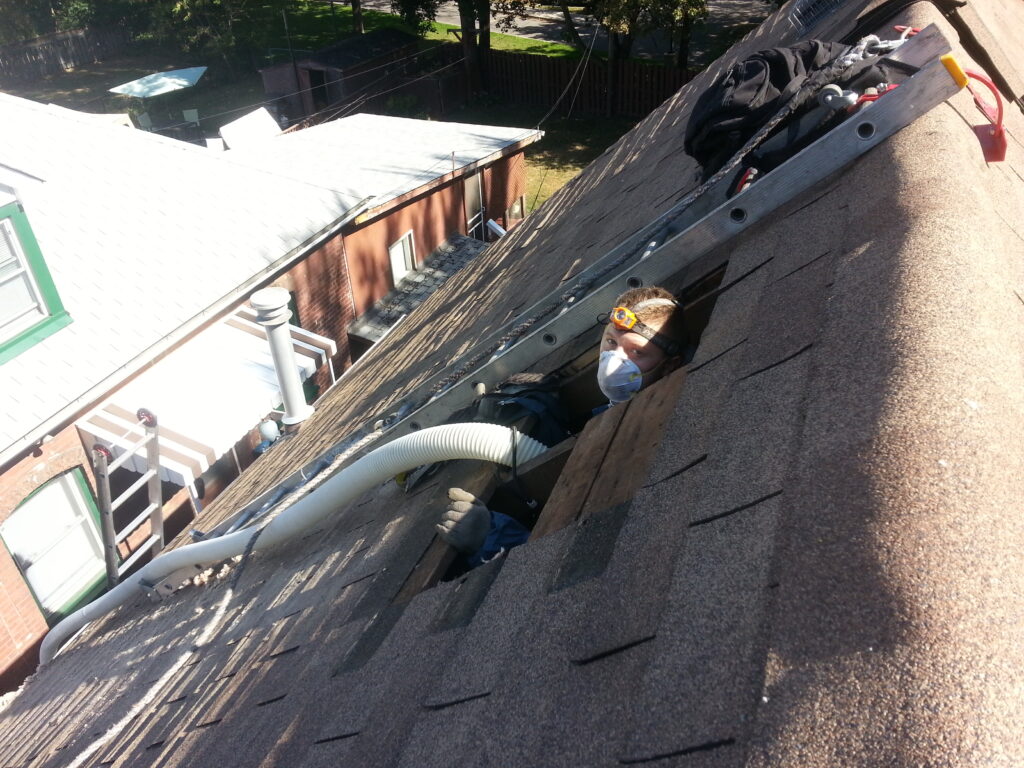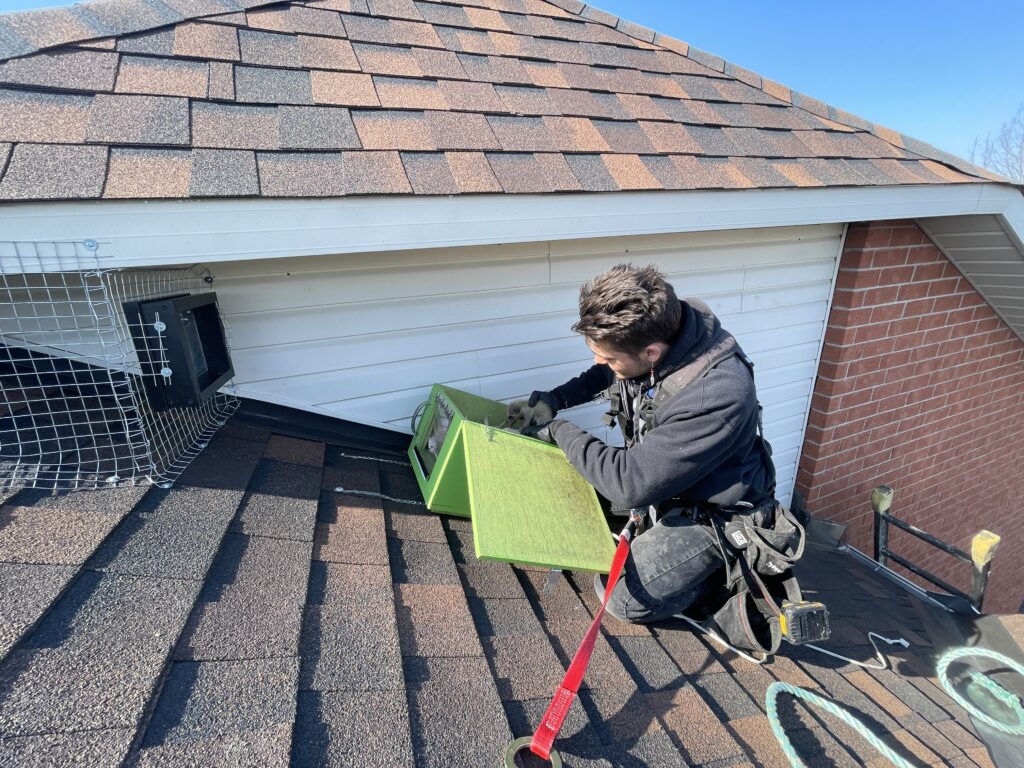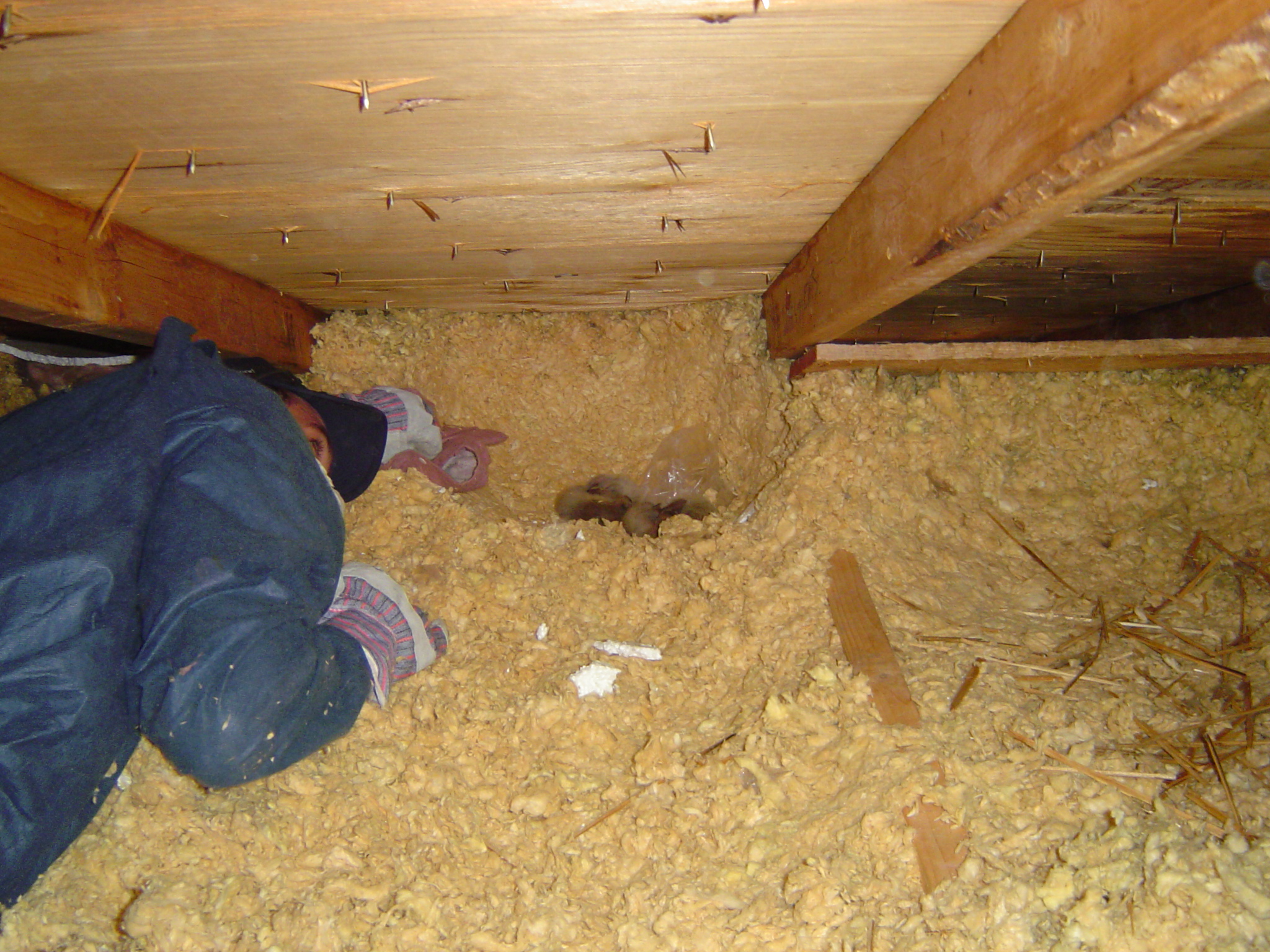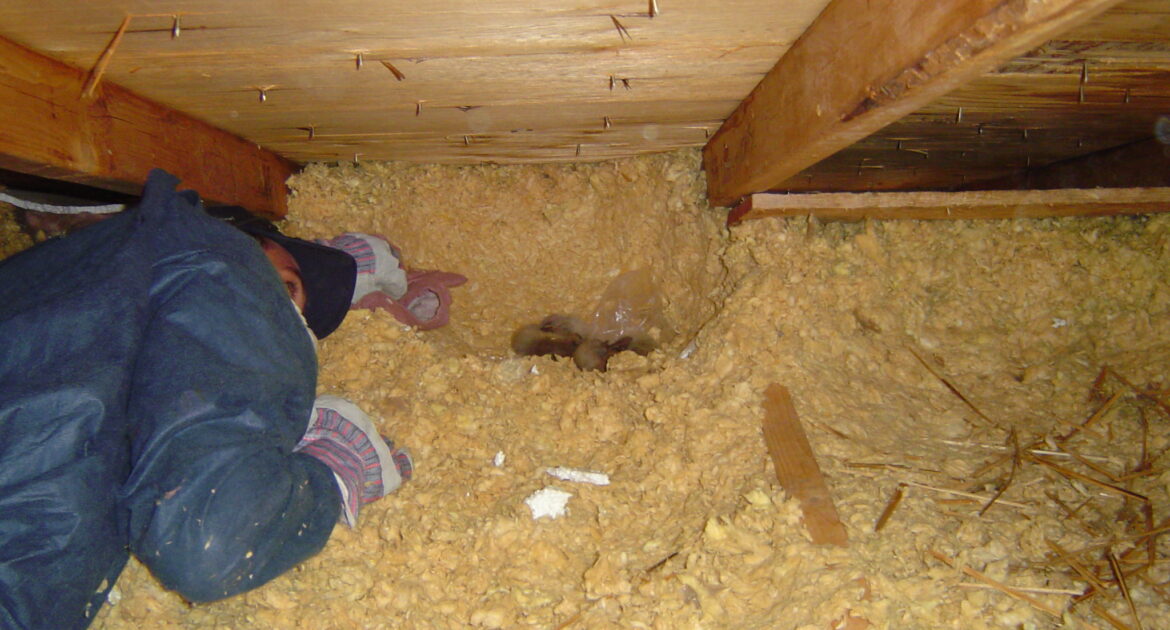Have you ever been startled by eerie, squeaking noises or a mysterious rustling coming from your attic? Those unsettling sounds may be a sign you have an uninvited guest. Yes, you might have raccoons in your attic in Coon Rapids!
This blog will guide you through the telltale signs you have wildlife in the attic, other signs they might have sneaked into your home, the potential risks associated with an infestation, and appropriate preventive measures you can take to avoid these nightly marauders.
As always, we’ll be your reliable guide throughout this journey, offering you insights from our expertise in wildlife control. By the end of this blog post, you’ll know how to detect, prevent, and handle an infestation. Let’s jump in and become a wise homeowner and learn how to get rid of raccoons in the attic.
What are the Common Signs of Raccoons in the Attic?
Spotting a raccoon in your attic isn’t always easy. They’re cunning and elusive critters that only come out at night, making their presence hard to detect. But failing to identify them early can quickly lead to significant damage and a potentially pricy clean-up. That’s why it’s crucial to learn to recognize some of the telltale signs of an infestation. If you identify any of these signs, do not hesitate to act.
Spotting Physical Evidence
Physical evidence they leave behind is often the most telling sign. Here’s what to look for:
- Droppings: Raccoon feces are similar to a small dog’s and may contain undigested food particles. Be careful; droppings often carry dangerous diseases. If you encounter them, do not try to handle them yourself.
- Nesting materials: These animals tend to use a wide range of materials, often stolen from your home, to build their nests. Look for anything out of place or torn up, such as insulation material, cardboard, or wood shavings.
- Tracks: Their footprints are very distinctive. They look like tiny human handprints with five fingers and claws. If you notice any of these tracks, it is a sure sign of raccoon presence.
Listen for Noises
Raccoons make a variety of noises, especially at night when they are most active. You may hear thumping, scratching, scurrying, or even vocal noises like chattering, growling, or crying from your ceiling. The sound of the mother calling their young is particularly notable.
Watch for Exterior Damage
Raccoons are strong animals that can cause damage to your home while searching for a way in. Check your roof for missing or torn shingles, damaged vents or soffits, and other signs of forced entry.
Presence of Dead Animals or Odor
A strong, foul odor permeating your home could indicate a dead raccoon or droppings in your attic. Equally, if you start to see an influx of flies or maggots, it could be due to a raccoon’s presence.
Recognizing these signs early can help minimize any potential damage and health risks. If you notice any of these signs, it’s time to contact a professional service like ours. After all, when it comes to raccoons in your attic, it’s best to leave the wildlife control in Coon Rapids to the experts.

What are Some Other Signs that Indicate Raccoons are in the Home?
While your attic may be a prime spot to make their home, it’s not the only area they may be drawn to. Here are several other signs that raccoons could be lurking in places other than your attic:
- Feces or Urine: Spotting feces or urine in other parts of your house, like the garage or basement, indicates their presence. This unsightly and smelly evidence is a tell-tale sign there’s a wildlife problem in your home.
- Overturned Trash Cans: They are notorious for rummaging through garbage cans in search of food. If you notice your trash cans are regularly overturned with garbage strewn about, raccoons might be the culprits.
- Garden Damage: They can wreak havoc on your garden, destroying plants and vegetables. This could be a key indication of an invasion.
- Pet Food Disappearing: They are not picky and often go after pet food. If your outside pet’s food is disappearing at an alarming rate, raccoons may be the reason.
What are the Potential Risks of Having an Infestation in the Attic?
Having a wildlife infestation in your attic poses some significant risks. The damage raccoons can carry out in your attic is one major concern. They have strong, dexterous hands that allow them to rip through roofing materials, shred insulation, and damage wiring. The excess moisture from their waste can lead to the growth of harmful mold, while their scent can attract other wildlife into your attic.
- Health Risks: Raccoons are known carriers of diseases such as rabies and raccoon roundworms, which can pose serious health threats to humans and pets alike. In addition, feces and urine can contain parasites and bacteria, potentially causing health issues for those living in the house.
- Structural Damage: Another common risk associated with them in the attic is significant damage to your property; in some cases, this can even compromise the integrity of your home. These wildlife creatures’ incessant scratching and gnawing can damage your walls, wiring, insulation, and roofing materials, leading to costly repairs.
- Disturbance: Raccoons are nocturnal animals, often causing a disturbance during the night. Their movement, fighting, and mating noises can significantly disrupt your sleep.
Given the risks associated with raccoons in your attic, acting promptly when you suspect an infestation is crucial. By turning to a trusted wildlife control service you can address the issue in a humane, safe, and efficient manner.
What are Effective Ways to Prevent a Raccoon Problem in the Attic?
Preventing a problem in the attic is always better than implementing treatments after these critters have gained entry. Having raccoons in your attic can cause significant damage to your property, as well as pose health risks to you and your family. Thus, it’s crucial to implement strategies to stop them from calling your attic home.
- Maintain Your Home Exteriors: Regular inspections are key to timely identifying and repairing any damages that might provide an entry point for wildlife. Keep tree branches near your home trimmed to eliminate easy access routes. Additionally, ensure all vents and chimneys are sealed off with a mesh cover to deter any unwanted furry visitors from making a home in your attic.
- Secure Potential Entry Points: They are clever and persistent creatures and can easily exploit weaknesses in your home’s defenses. Seal off potential entrances such as vents, chimneys, roof and eave spaces, windows, and doors. Trimming back branches that offer easy access to your roof can also be an effective preventive measure against infestations.
- Improve Your Trash Management: Raccoons are opportunistic eaters and are drawn by the smell of food. Make sure your trash cans have tight-fitting lids, and consider adding a weight or lockable band to deter these pesky invaders further. Moreover, keeping the area around your trash cans clean and free of food debris could substantially decrease the chance of attracting wildlife to your property.
- Use Repellents: Raccoons have a keen sense of smell. Repellents can be an effective measure to discourage wildlife from approaching your property. Please consult a professional wildlife control to offer advice on safe and effective products. These deterrents can range from simple home remedies to commercial products, all aimed at making your attic less inviting to these uninvited guests.
While these are effective preventative measures, there may be cases where raccoons continue to be a nuisance. When that happens, it’s best to have a professional step in.
What are the Benefits of Hiring a Professional Wildlife Removal Service?
Raccoons are cunning and can become quite troublesome when they take up residence in your attic. While it might seem tempting to try to handle wildlife removal yourself, it’s far better to enlist the help of professionals in wildlife control. Let’s explore the key benefits of hiring a professional raccoon removal service.
- Safe and Humane Methods: Raccoon removal can only be risky with proper training and tools. A professional service ensures that the removal process is safe and humane for both the homeowners and the animal.
- Preventive Measures: Beyond removing the immediate problem, professional services also help you implement preventive measures. They identify potential entry points and assist in sealing them off to prevent future infestations.
- Comprehensive Cleanup: With professional service, it’s not just about wildlife control; it’s about restoring your home. Professionals ensure your attic is cleaned and sanitized, eliminating animal waste and the dangers of associated diseases.
- Insurance Compliance: Homeowners’ insurance policies often cover wildlife removal services. Professionals can help you navigate the necessary paperwork and compliance.
While many folks initially worry about the potential cost, consider the alternative. A raccoon in your attic can lead to significant damage and expensive repairs without professional intervention. It’s not just about the initial annoyance but the long-term implications on your home’s value and your family’s health.

Skedaddle Humane Wildlife Control: Your Best Choice
The thought of wildlife residing in your home can be unsettling and disruptive. Our team can help. More than just a catchy name, Skedaddle Humane Wildlife Control is a leading provider of wildlife control in Coon Rapids. Our team is highly trained in dealing with wildlife, ensuring they are safely removed and humanely relocated.
Don’t let a raccoon problem spiral out of control. We’re here to offer prompt, professional, and effective raccoon control. If you have raccoons in your attic, don’t hesitate to reach out. Contact us to request a quote, understand more about our process, and take the first step in reclaiming your home from unwelcome guests. We’re just a phone call away, ready to help you with wildlife removal services.




